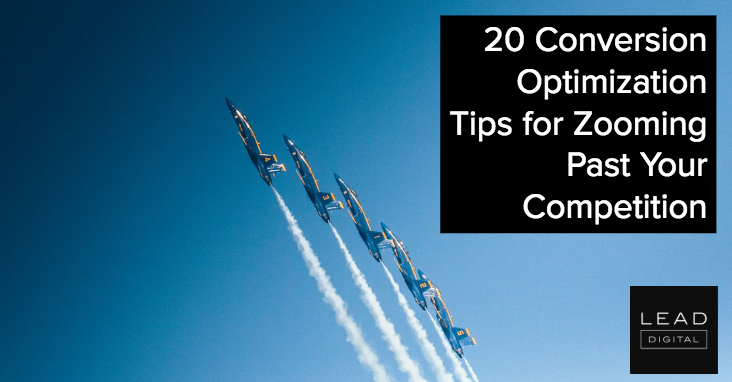
Conversion optimization (CRO) is one of the most impactful things you can do as a marketer.
I mean, bringing traffic to a website is important (because without traffic you’re designing for an audience of crickets). But without a cursory understanding of conversion optimization—including research, data-driven hypotheses, a/b tests, and analytical capabilities—you risk making decisions for your website traffic using only gut feel.
CRO can give your marketing team ideas for what you can be doing better to convert visitors into leads or customers, and it can help you discover which experiences are truly optimal, using A/B tests.
However, as with many marketing disciplines, conversion optimization is constantly misunderstood. It’s definitely not about testing button colors, and it’s not about proving to your colleagues that you’re right.
I’ve learned a lot about how to do CRO properly over the years, and below I’ve compiled 20 conversion optimization tips to help you do it well, too.
Conversion Optimization Tip 1:
Learn how to run an A/B test properly
Running an A/B test (an online controlled experiment) is one of the core practices of conversion optimization.
Testing two or more variations of a given page to see which performs best can seem easy due to the increased simplification of testing software. However, it’s still a methodology that uses statistical inference to make a decision as to which variant is best delivered to your audience. And there are a lot of fine distinctions that can throw things off.
What is A/B Testing?
There are many nuances we could get into here—Bayesian vs. frequentist statistics, one-tailed vs. two-tailed tests, etc.—but to make things simple, here are a few testing rules that should help you breeze past most common testing mistakes:
- Always determine a sample size in advance and wait until your experiment is over before looking at “statistical significance.” You can use one of several online sample size calculators to get yours figured out.
- Run your experiment for a few full business cycles (usually weekly cycles). A normal experiment may run for three or four weeks before you call your result.
- Choose an overall evaluation criterion (or north star metric) that you’ll use to determine the success of an experiment. We’ll get into this more in Tip 4.
- Before running the experiment, clearly write your hypothesis (here’s a good article on writing a true hypothesis) and how you plan to follow up on the experiment, whether it wins or loses.
- Make sure your data tracking is implemented correctly so you’ll be able to pull the right numbers after the experiment ends.
- Avoid interaction effects if you’re running multiple concurrent experiments.
- QA your test setup and watch the early numbers for any wonky technical mistakes.
I like to put all of the above fine details in an experiment document with a unique ID so that it can be reviewed later—and so the process can be improved upon with time. – Read more



